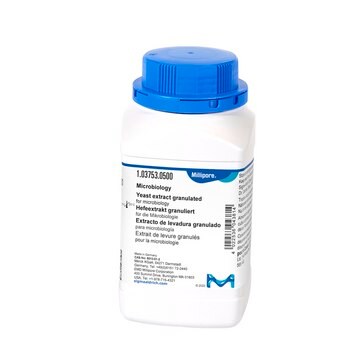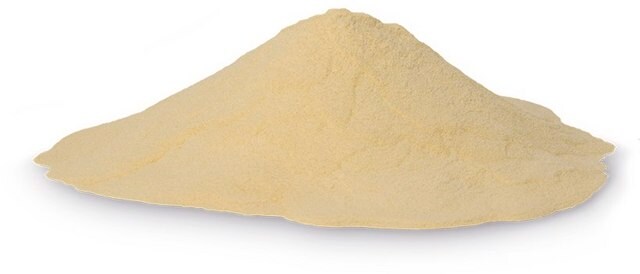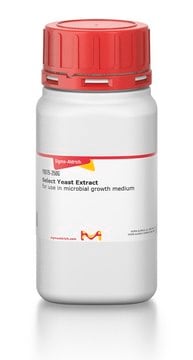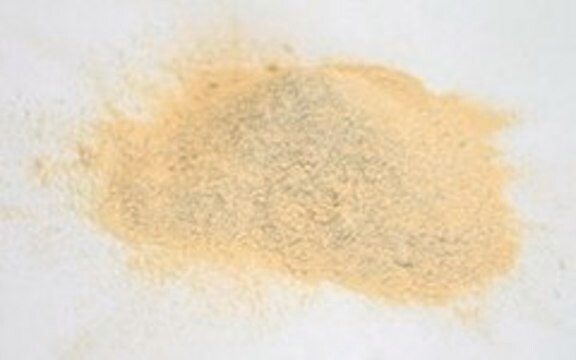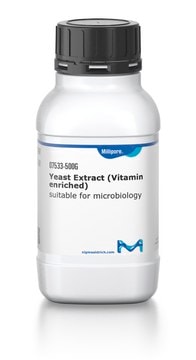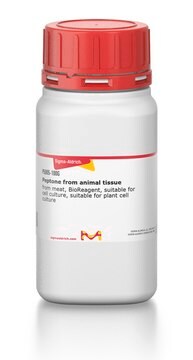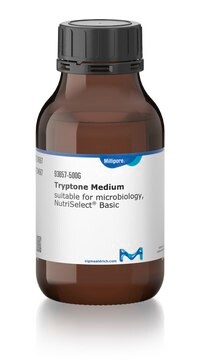Y1625
Yeast Extract
for use in microbial growth medium
Synonym(s):
Select Yeast Extract, microbial growth media, microbial growth medium
About This Item
Recommended Products
grade
Molecular Biology
for molecular biology
Quality Level
sterility
non-sterile
form
powder
technique(s)
microbiological culture: suitable using
application(s)
agriculture
storage temp.
room temp
suitability
nonselective for Escherichia coli
nonselective for coliforms
SMILES string
OC(=O)CC1c2c3c(ccc2c4c1cccc4)cccc3
InChI
1S/C19H14O2/c20-18(21)11-17-15-8-4-3-7-14(15)16-10-9-12-5-1-2-6-13(12)19(16)17/h1-10,17H,11H2,(H,20,21)
InChI key
GQNBDGXKDJSVGQ-UHFFFAOYSA-N
Looking for similar products? Visit Product Comparison Guide
General description
Application
- complex media for culturing E. coli clones for shake flask experiments
- culture media for culturing bacterial species Gluconacetobacter xylinus
- yeast extract beef (YEB) media for the transformation of Agrobacterium
Other Notes
related product
Storage Class Code
11 - Combustible Solids
WGK
WGK 1
Flash Point(F)
Not applicable
Flash Point(C)
Not applicable
Personal Protective Equipment
Choose from one of the most recent versions:
Already Own This Product?
Find documentation for the products that you have recently purchased in the Document Library.
Customers Also Viewed
Protocols
TE Buffer; Elution Buffer; 10x Ligation Buffer; 0.5 M PIPES Buffer; Inoue Transformation Buffer
Our team of scientists has experience in all areas of research including Life Science, Material Science, Chemical Synthesis, Chromatography, Analytical and many others.
Contact Technical Service
